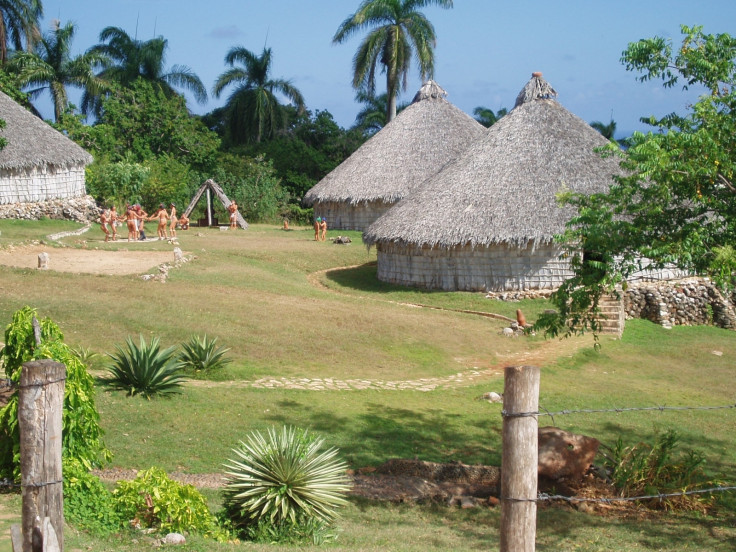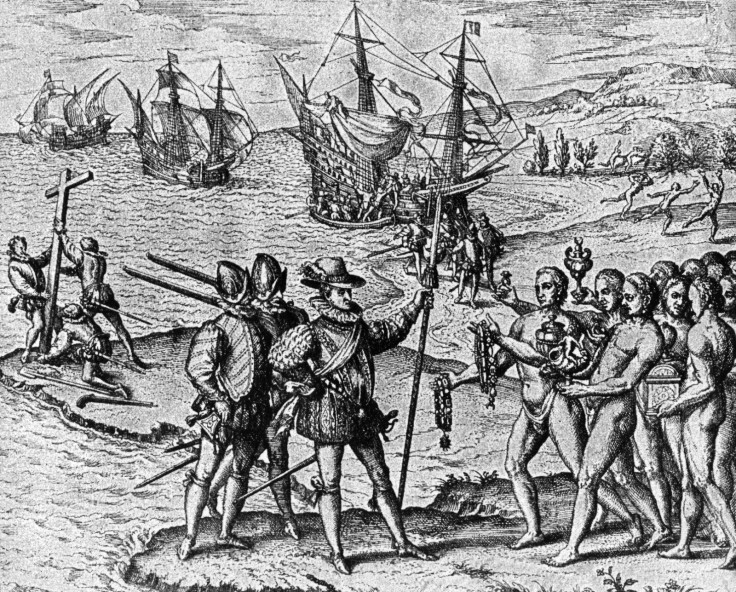Who are the Taíno people? Ancient tooth traces 'extinct' indigenous community to the Caribbean
The tooth belonged to a woman who lived at least 500 years before Christopher Columbus landed in the region.

In 1492, Italian explorer Christopher Columbus was way off his intended mark — Japan — when he first set foot on an island in the Bahamas archipelago. While his navigation skills do come into question, the mistake led to his discovery of the Americas, starting with the Caribbean.
According to records of the time, the Spanish crew made first contact with the natives, a group of indigenous islanders known as the Taíno people.
"They traded with us and gave us everything they had, with good will ... they took great delight in pleasing us ... They are very gentle and without knowledge of what is evil; nor do they murder or steal," Columbus wrote in his correspondence with the Spanish Crown.
"Your highness may believe that in all the world there can be no better people ... They love their neighbours as themselves, and they have the sweetest talk in the world, and are gentle and always laughing."
While the locals welcomed the colonists at first, they later came to despise them. The Taíno along with other native communities banded together in 1511 in an effort to oust the Spanish. At the time, the locals were being forced to pay tribute to the Crown and were brutally punished if unable to do so.
The Europeans had also brought with them First World diseases that the indigenous people were not immune to. Disease wreaked havoc on the local populations along with mass killings and slavery. It was believed that the Taíno community was completely eradicated around 30 years after their contact with the Europeans.

However, a new study now claims that the group may not have gone extinct after all. Research published in the Proceedings of the National Academy of Sciences on 20 February claims that scientists have been able to trace the Taínos' DNA to their modern-day descendants in the Caribbean.
"The differences in opinion illustrate the difficulty of tracing population movements based on a patchy archaeological record," lead archaeologist Hannes Schroeder of the University of Copenhagen, Denmark, stated.
Archaeologists had previously discovered three complete skeletons in Preacher's Cave, a site on the northern end of Eleuthera Island in the Bahamas, along with a single tooth that looked to be from a different time. Using carbon dating, Schroeder's team confirmed that the tooth was around 1,000 years old — and belonged to a Taino woman who lived 500 years before the Europeans made contact.
Using the tooth-derived genome, the team has been able to trace it to the genome of some contemporary Puerto Ricans.
"It has always been clear that people in the Caribbean have Native American ancestry, but because the region has such a complex history of migration, it was difficult to prove whether this was specifically indigenous to the Caribbean, until now," study author Eske Willerslev of the University of Cambridge and the University of Copenhagen, said in a statement.
"These indigenous communities were written out of history," Jada Benn Torres, a genetic anthropologist at Vanderbilt University in Nashville said according to Science magazine. "They are adamant about their continuous existence that they've always been [on these islands]. So to see it reflected in the ancient DNA, it's great."
While the genetic testing has not identified any direct relations of the woman to whom the tooth belonged, it has revealed genetic links between the Taíno and contemporary communities from northern South America as well. The Arawakan language — the kind that was used by the Taíno — was reportedly developed in the Amazon and Orinoco Basins.
The evidence indicates that the ancient woman's ancestors may have made their way to the Caribbean from South America and then spread out across the islands.
"It's almost like the ancient Taino individual they're looking at is the cousin of the ancestors of people from Puerto Rico," Maria Nieves-Colón, a geneticist who studies ancient and modern Caribbean populations at the National Laboratory of Genomics for Biodiversity in Irapuato, Mexico, said of the study. "You know what? These people didn't disappear. In fact, they're still here. They're in us."






















